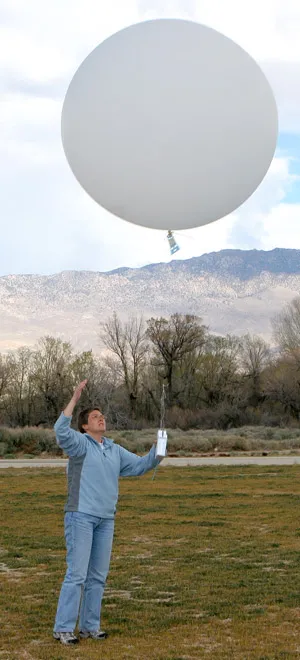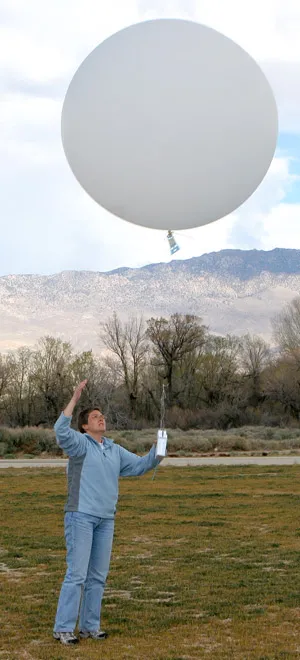Hey everyone, it’s your boy back again with another little project I’ve been messing around with. Today, I’m talking about weather balloons. Yeah, you heard that right, those big floaty things that go way up high. I got it into my head that I wanted to see if I could use one of these to do some science stuff, just for kicks.

So, first thing I did was get my hands on a weather balloon. I found a place online that sells them, along with this little box of instruments called a radiosonde. The balloon itself is made of this stretchy latex material, really flexible. It looked pretty big, around four or five feet across. The radiosonde is basically the brains of the operation. It’s got sensors and stuff to measure things like temperature, how much moisture is in the air, and wind speed.
After getting all the gear, I started putting it all together. I attached the radiosonde to the balloon with some strong string. It wasn’t too complicated, to be honest. The tricky part was filling the balloon. You can use either hydrogen or helium, but I went with helium because it’s safer. I had to get a helium tank, which was a bit of a hassle, but I managed.
The Launch
Once the balloon was inflated, I took it out to a big open field. I picked a day with clear skies, because I wanted to see the balloon go up as far as possible. Launching it was simple, just let it go. It started rising pretty fast, about a thousand feet per minute. It was cool watching it float up higher and higher until it was just a little speck in the sky.
As the balloon was going up, the radiosonde was sending data back to a receiver I had set up. I was getting all these readings on atmospheric pressure, temperature, and humidity. The data started coming in, and I was like a kid in a candy store, watching the numbers change as the balloon climbed.
Data Collection
- Temperature: It got colder and colder the higher it went, which makes sense.
- Humidity: This changed a lot, sometimes it was really dry, and other times there was more moisture.
- Pressure: This dropped steadily as the balloon got higher, which is also what I expected.
I let the balloon go as high as it could. It got to the stratosphere, which is pretty up there. It was up there for a while, sending back data. Eventually, the balloon popped, which is normal, and the radiosonde came back down with a parachute. I tracked it using a GPS thing I had attached. Went out and found it in a field not too far from where I launched it.

Retrieving the radiosonde was a bit of an adventure. It landed in a field a few miles from where I launched it. Thankfully, I had attached a GPS tracker to it, so I was able to locate it using my phone. It was like a little treasure hunt. I got a pretty decent amount of data from this little experiment.
This whole thing was more about having fun and learning something new. I always thought weather balloons were pretty cool, and actually using one was a blast. It’s amazing how these things work and how much information you can get from them. Plus, it was just fun to see something I built go so high up in the sky.
This whole weather balloon thing was a neat experience. It’s not every day you get to send something up into the stratosphere. If you’re into science and like doing hands-on stuff, I’d definitely recommend giving this a try. It’s a fun project, and you learn a lot along the way. Who knew a big balloon could be so interesting? Anyway, that’s it for this project. Catch you all later!
